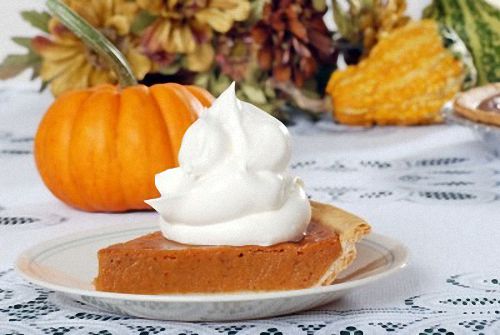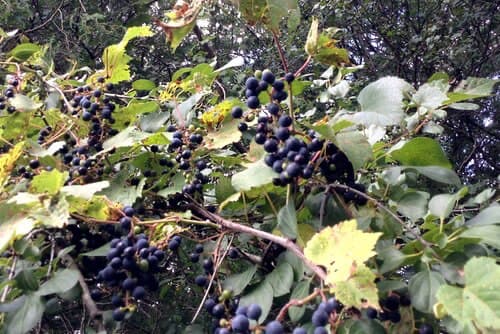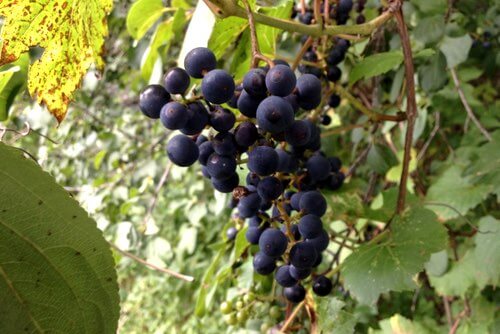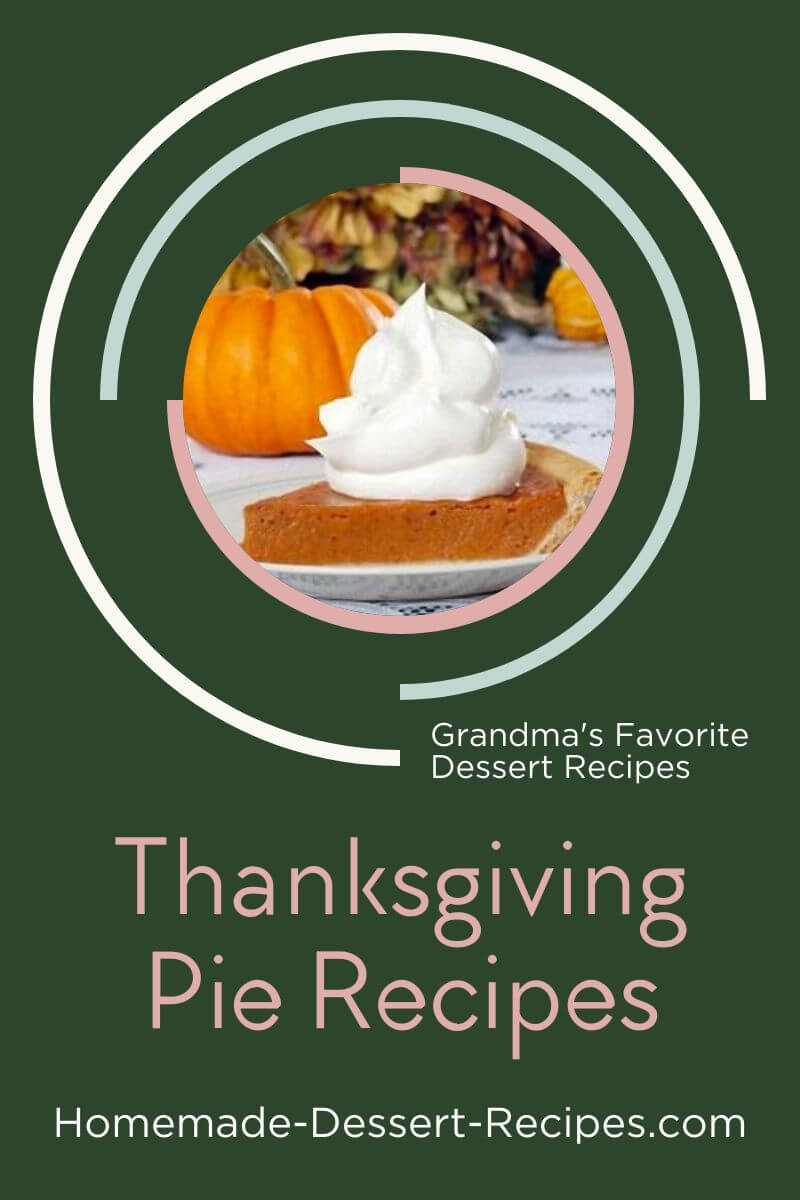- Home
- Thanksgiving
- Thanksgiving Day Pie Recipes
Traditional Thanksgiving Day Pie Recipes for a Classic Holiday
There's a special kind of magic in heirloom recipes, a delicious connection to the past that makes any celebration feel more meaningful. Our collection of Traditional Thanksgiving Day Pie Recipes is more than just a list of ingredients; it's a treasure trove of memories, carefully preserved from family scrapbooks and historic cookbooks dating from the 1870s.
These are the pies that graced Grandma's holiday table — from the familiar comfort of a perfectly spiced pumpkin pie to the delightful surprise of a tangy crabapple or a creamy potato custard. Join us as we explore these timeless desserts, each with its own story, ready to become a cherished part of your family's Thanksgiving tradition.
When Is Thanksgiving Day?
Canadian Thanksgiving — Monday, October 13, 2025
American Thanksgiving — Thursday, November 27, 2025
Enjoy Grandma's Traditional Thanksgiving Day Pie Recipes
Mom's Recipe Scrapbooks (1920s)
 Pumpkin Pie Ready to Serve at Thanksgiving
Pumpkin Pie Ready to Serve at Thanksgiving(Source: ©michael-gray/123RF)
Grandma's best recipes for homemade pie were jotted down in the kitchen while Mom watched and questioned her. That was the only way she could get Grandma's traditional Thanksgiving Day pie recipes and reveal exactly how she did things, for she often cooked by inspiration instead of by recipe. While they are perfect pies for your Thanksgiving Dinner, they are also wonderful for serving at any time of the year.
Classic Pumpkin Pie with a Hint of Maple
This recipe is the quintessential taste of an old-fashioned Thanksgiving. The addition of maple syrup and evaporated milk creates a wonderfully rich and smooth custard with a subtle, warming sweetness that sets it apart. This recipe makes enough filling for two pies, perfect for a large family gathering.
Evaporated Milk
To substitute 1 cup evaporated milk, use 1 cup heavy cream, or gently simmer 2-1/4 cups whole milk in a saucepan until reduced to 1 cup.
One large can of pumpkin (about 14 ounces). Let it simmer without a cover for about 15 minutes. Put through a sieve, and let cool before adding:
3 eggs well beaten, 2 cups milk, 1/2 cup Evaporated Milk, 1/2 cup sugar, 2 tablespoons maple syrup, 1 generous tablespoon melted butter, small 1/2 teaspoon grated nutmeg, 1 teaspoon cinnamon, 1/2 teaspoon powdered ginger, 1 teaspoon salt.
Quantity should be enough to fill two regular-sized pie shells for baking. (Baking times same as recipe for pumpkin pie below.)
Easy Spiced Brown Sugar Pumpkin Pie
For those who prefer a deeper, more molasses-like flavor in their pumpkin pie, this version is a dream. The use of brown sugar and a touch of mace gives the filling a warm, complex spice profile that is simply irresistible. Scalding the milk and cream first is an old-fashioned trick that helps create a smoother, more stable custard.
1 cup brown sugar, 1/2 teaspoon salt, 1 teaspoon cinnamon, 1/2 teaspoon mace, 2 eggs slightly beaten, 1 14-ounce can pumpkin (398 mL), 1/2 cup milk, 1/2 cup cream. Mix together thoroughly brown sugar, salt, cinnamon, and mace. Stir in eggs, add pumpkin and blend. Stir in milk and cream, previously scalded.
Bake pie for 20 minutes in very hot oven (450°F), then reduce heat to moderately slow oven (350°F) and continue baking about 25 minutes longer. 1-1/2 cups pie filling makes 1 large pie.
The Surprising Delight of Potato Custard Pie
Don't let the name fool you; this is a true Depression-era gem that tastes remarkably like a classic custard pie, only richer and creamier. The mashed potatoes create an incredibly smooth texture and a mild, sweet flavor that will have your guests guessing the secret ingredient. It's a wonderful piece of culinary history to share.
Nicely mashed potatoes, 1-1/2 cups; sugar, 2 cups; milk, 1 quart; eggs, 5; a little salt, and any flavoring desired.
Directions: Beat the eggs well, mix all, and dip into the pans made ready with the usual paste, or crust, and bake the same as any custard pie.
Tangy Sour Cream & Raisin Meringue Pie
This traditional Thanksgiving Day pie recipe serves up a beautiful balance of sweet and tangy flavors, a popular combination in early 20th-century baking. The sour cream provides a delightful tartness that cuts through the sweetness of the raisins, all nestled in a flaky crust and topped with a cloud of fluffy meringue. It's an elegant and unexpected addition to the dessert table.
4 eggs, 1/2 teaspoon salt, 1 cup sugar, 2 cups raisins, 2 cups sour cream. Beat eggs slightly. Add salt, sugar, raisins and cream. Mix thoroughly and pour into unbaked pie shell.
Bake in hot oven (400°F) 10 minutes. Reduce temperature to 350°F and bake 20 minute longer, or until custard is firm.
Cover with meringue made by beating 2 egg whites until stiff and adding 2 tablespoons powdered sugar. Return to oven to brown meringue.
Rustic Whole Wheat Harvest Fruit Pie
This pie feels like a warm hug on a cool autumn day. The hearty whole wheat crust gives it a nutty, rustic flavor that pairs perfectly with the medley of sweet and tart fruits inside. Serve a warm slice with a scoop of vanilla ice cream for a truly comforting and satisfying dessert.
Crust: 1-1/2 cups whole wheat flour, 3/4 teaspoon salt, 1/2 teaspoon baking powder, 1/2 cup shortening, cold water.
Method: Sift dry ingredients, cut in shortening and gradually the water (about 6 tablespoons). Divide pastry in half, toss one part on floured board and line 9-inch pastry pan.
Filling: 1 cup cut pineapple, 1 cup raisins, 1 cup apples, 1/2 cup sugar, juice of 1 lemon, rind of 1/2 lemon. Method: Chop fruit, add sugar and juice, and grated rind of lemon. Turn into the pastry-lined pan, cover with second crust.
Bake in hot oven (450°F) for 15 minutes, reduce heat to moderate (350°F) and continue baking for about 40 minutes. Serve hot or cold with a generous mound of vanilla ice cream.
Timeless Pie Fillings from The White House Cook Book
The White House Cook Book (1913)
These recipes offer a glimpse into the flavors enjoyed over a century ago. They are presented as fillings, ready to be poured into your favorite homemade pie crust.
Rich and Creamy Winter Squash Pie Filling
Often overshadowed by its pumpkin cousin, squash pie is a treasured classic in its own right, preferred by many for its smoother texture and delicate, sweet flavor. This simple recipe lets the natural sweetness of the winter squash shine, enhanced by warm spices and a touch of molasses. It makes enough for two pies, or one very deep and generous one.
One pint of boiled dry squash, one cupful of brown sugar, three eggs, two tablespoonfuls of molasses, one tablespoonful of melted butter, one tablespoonful of ginger, one teaspoonful of cinnamon, a pinch of salt, and one pint of milk. This makes two pies, or one large deep one.
Old-Fashioned Wild Grape Pie Filling
 Wild Grape Vines With Clusters of Wild Grapes
Wild Grape Vines With Clusters of Wild Grapes(Source: ©Don Bell)
Before Concord grapes were widely available, home bakers used the small, tart wild grapes that grew along fences and fields. This traditional Thanksgiving Day pie recipe captures that authentic, tangy flavor that is hard to find today. The unique method of separating the pulp and skins is key to creating a smooth, seedless filling with a beautiful deep purple color.
 Cluster of Wild Grapes Ripening
Cluster of Wild Grapes Ripening(Source: ©Don Bell)
Wild grapes are more tart and tangy than cultivated grapes and while they always taste sweeter after the first frost, some people might still find them a bit on the sour side and want to add a little sugar.
Pop the pulps out of the skins into one dish and put the skins into another. Then simmer the pulp a little over the fire to soften it; remove it and rub it though a colander to separate it from the seeds, if any.
Then put the skins and pulp together and they are ready for pies, or for canning, or for putting in jugs for other use. Very fine for dessert pies.
A Pioneer's Thanksgiving Pie Recipe
Buckeye Cookery and Practical Housekeeping (1877)
 Ripe Crabapples Ready for a Thanksgiving Pie
Ripe Crabapples Ready for a Thanksgiving Pie(Source: ©Don Bell)
The above photo was taken last fall in front of our house. The old crabapple trees are bountiful some years, and the tiny, tart apples are perfect for pie making.
This traditional Thanksgiving Day pie recipe is a testament to the resourcefulness of 19th-century home bakers, using the tart crabapples that were often found growing on homesteads along the fences.
Tart and Sweet Sliced Crabapple Pie
Mom often made use of this recipe when the crabapples were in season, and it remains a family favorite. The tiny, tart apples cook down into a wonderfully fragrant and flavorful filling, perfectly balanced by the sweet sprinkle of sugar and cinnamon. The cookbook offers two methods, including a clever trick for adding the sugar and butter after baking to keep the top crust crisp.
Line pie pan with crust, sprinkle with sugar, fill with crabapples (or tart apples) sliced very thin, sprinkle sugar and a very little cinnamon over them, and add a few small bits of butter, and a tablespoon water; dredge in flour, cover with the top crust, and bake (350°F) half to three-quarters of an hour; allow four or five tablespoons sugar to one pie.
Or, line pans with crust, fill with sliced apples, put on top crust and bake; carefully take off top crust, put in sugar, bits of butter, and seasoning, replace crust and serve warm. It is delicious when sweetened with cream. — Mrs. D. Buxton
Grandma's Pie Baking Success Tips
Grandma's recipes sometimes use terms and techniques that aren't common today. Here's a little guide to help you navigate these cherished instructions like a seasoned baker.
- Scalding Milk: This means heating milk in a saucepan until just before it boils (you'll see small bubbles forming around the edge). This was done to kill bacteria in unpasteurized milk, but it also helps dissolve sugar and temper eggs, resulting in a smoother custard.
- Cut in Shortening: This is the process of breaking down solid fat (like shortening, lard, or cold butter) into small pieces within the flour to create a flaky pie crust. You can use a pastry blender, two knives, or even your fingertips. The goal is to have pea-sized pieces of fat coated in flour.
- Sieving Pumpkin: The instruction to simmer and sieve canned pumpkin was common when canning processes were less refined. This step breaks down any fibrous strands, ensuring an incredibly smooth and silky pie filling. While not always necessary with modern canned pumpkin, it's still a step that guarantees a superior texture.

Sign Up now for GRANDMA'S DESSERT CLUB and download your FREE PDF COPY of Grandma McIlmoyle's Little Dessert Book. Also receive my regular Bulletin featuring classic recipes and nostalgia.





